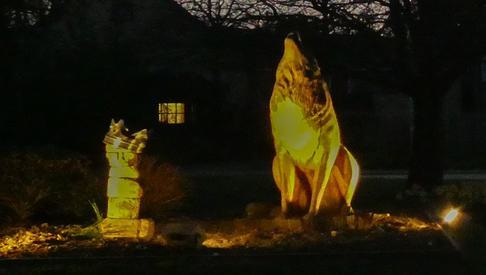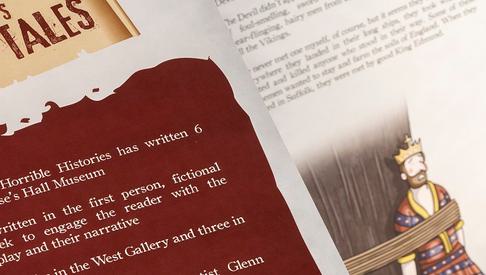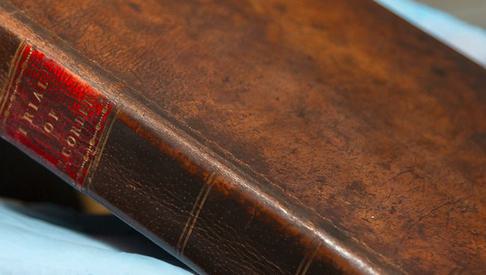
Back to Blogs
Discover
Bury St Edmunds Witch Trials
The history of Bury St Edmunds took a very dark turn between 1599 and 1694 when the Great Witch Craze swept through Europe and the European colonies in America leading to one of the largest witch trials in England in Bury St Edmunds.
The Witch Trials in Bury St Edmunds

As in Arthur Miller’s famous play, The Crucible, which details the Salem Trials in America where evidence from hysterical neighbours was used to send many innocent people to their graves, similar events happened in Suffolk.
East Anglia became synonymous with witch hunts due to the presence of one of medieval history’s most notorious figures Matthew Hopkins - the self-styled 'Witchfinder General'.
From each town he visited he received ample pay (his services in Stowmarket, Suffolk alone earned him over £3,300 in today’s money). The more witches he rooted out, tried and executed on the flimsiest of evidence, the more Hopkins grew rich. It's estimated Hopkins' work lead to around 100 executions across East Anglia.
The first recorded account of a witch trial at Bury St Edmunds was in 1599 when Jone Jordan of Shadbrook (Stradbroke) and Joane Nayler were tried, but there is no record of the charges or verdicts. In the same year, Oliffe Bartham of Shadbrook was executed for "sending three toads to destroy the rest (sleep) of Joan Jordan".
It is thought that the trials were probably held at the site of the new Shire Hall in Raingate Street near the Great Churchyard now the town’s Premier Inn.
Two trials in Bury St Edmunds became historically well known.
In 1645, 16 women (Anne Alderman, Rebecca Morris, Mary Bacon, Mary Clowes, Sarah Spindler, Jane Linstead, Mary Everard, Mary Fuller, Susan Manners, Jane Rivet, Mary Skipper, Mary Smith, Margery Sparham, Katherine Tooly, Anne Leech and Anne Wright) and 2 men (Thomas Everard and John Lowes, the Vicar of Brandeston) were found guilty of witchcraft, all of them were from villages in the surrounding area.
The trial, facilitated by Witchfinder General Matthew Hopkins, saw all 18 executed in one day on August 27 1645. Up until then the biggest legal case had been the 11 Pendle Hill witches who were tried at Lancaster in 1612.
In 1662, two elderly widows, Rose Cullender and Amy Denny (or Deny or Duny), both living in the nearby town of Lowestoft were accused of witchcraft by their neighbours.
They were accused of causing a toad to fall out of a child’s blanket and then vanish with a hiss in the fire. Once suspicion of witchraft began, they were then accused of making Samuel Pacey’s children vomit pins and nails after he refused to sell them herrings; they were also “credited” with infesting another man with lice, causing a cart to collapse and a chimney to fall down, not to mention causing the deaths of local pigs, cattle and horses.
They were tried on 10 March 1662 at the Assizes at Bury St. Edmunds by one of England's most eminent judges of the time, the Lord Chief Baron of the Exchequer, Sir Matthew Hale, and the jury found them guilty on thirteen charges of using malevolent witchcraft.
The testimony of the philosopher, physician and author, Thomas Browne, probably helped in the conviction. They were sentenced to death and were hanged a week later at Thingoe Hill on March 17 1662. The trial had a powerful and tragic influence on the continuing persecution of witches in England and similar persecutions in the American colonies. The case became a model for, and was specifically referenced in, the Salem Witch Trials in Massachusetts, when the magistrates were looking for proof that "spectral evidence" (evidence based on dreams and visions) could be used in a court of law.
The executions were held on unconsecrated ground outside of the town at Southgate Green (near to where Wyevale Garden Centre is today), Thingoe Hill and to the west at Tut Hill (near to where Bury St Edmunds Golf Club).
Accused Witches were taken to a building where The Nutshell pub is today and had their nails cut or locks of hair. The nails and hair were stored in brown jars in the basement as it was thought that if you were not whole when you died, you wouldn’t be able to come back as a whole witch in the next life!
The last witch trial at Bury St. Edmunds was in 1694, when Lord Chief Justice Sir John Holt forced the acquittal of Mother Munnings of Hartis (Hartest) on charges of prognostications causing death. The chief charge was 17 years old, and the second was brought by a man on his way home from an alehouse.
After just three years, Matthew Hopkins retired as Witchfinder General. He moved back to Manningtree, and before the year ended had died of supposed tuberculosis. But his disturbing legacy lived on with his book ‘The Discovery of Witches’ providing a blueprint for further persecution of witches over the next hundred years. Hopkins has seeped into popular culture in the form of numerous heavy metal songs and the 1968 Hammer movie Witchfinder General which was filmed in Suffolk including Lavenham and starred Vincent Price.
To find out more about superstitions and witchcraft in Bury St Edmund visit Moyse’s Hall Museum, a beautiful medieval museum that is the second oldest building in England.

It houses a collection of witchcraft artefacts which includes a rare 17th century Elder Wand (in the Harry Potter novels, the Elder Wand was considered the most powerful wand of all), a witch’s puppet, along with mummified cats (above), child and adult shoes, which were bricked up in the walls of Suffolk properties to keep witches away.
If you enjoy gruesome tales then Moyse's Hall Museum is a must with its 'Terrible Tales' theme and stories written by Horrible Histories Author Terry Deary. Terry brings to life some of Bury St Edmunds more gruesome tales, especially for children. plus there are some great hands on exhibits.
Step into a gibbet cage, hold a real Norman sword and try out a ball and chain for size!
Related Posts



Harry Potter Fans Will Enjoy the Magic of…
Check out our guide to a magical stay in Bury St…
View More
Horrible Histories Creator Brings Terrible…
Horrible Histories creator Terry Deary has helped…
View More
Bury St Edmunds' Horrible Histories!
Discover the gruesome tales in Bury St Edmunds' murky…
View MoreRelated Blogs

News
Spend a Weekend in Haunted…
From ghostly medieval monks to the infamous Grey Lady,…

News
Red Barn Murder
Discover the story of the notorious Red Barn Murder at…

News
Haunted Bury St Edmunds
From ghostly medieval monks to the infamous Grey Lady,…

News
Bury St Edmunds' Horrible…
Discover the gruesome tales in Bury St Edmunds' murky…

News
Myths & Legends of Bury St…
With a 1000 year history, Bury St Edmunds & Beyond is…
Latest news

News
Discover Suffolk's County Flower - the Oxlip
Did you know that Suffolk has a county flower? The Oxlip only grows in some woodland areas of Suffolk, Cambridgeshire and Essex.

News
Quentin Blake ‘The Illustrated Hospital’ exhibition at Bury St Edmunds Museum
A summer exhibition of illustrations by Quentin Blake at Moyse’s Hall Museum, Bury St Edmunds presents a rare opportunity to view a large collection of pieces by one of the nation’s favourite artists.

News
Abbey Project Awarded National Lottery Heritage Fund Grant
The project aims to conserve and protect the ruins; build a visitor centre, west cloister, and network of footpaths; and use digital technology to provide exciting interpretation for all ages and…

News
Walks at Rougham
Rougham Estate offers 18 miles of public footpaths, cycling routes and permissive pathways for you to enjoy.

News
Bury St Edmunds Celebrates English Tourism Week
Bury St Edmunds MP, Jo Churchill, met representatives from the town’s attractions and tour guides involved with the town’s Masters of the Air tourism campaign at Bury St Edmunds Guildhall.

News
Tours Take Off for Masters of The Air
Tours developed by Bury St Edmunds Tour Guides and Bury St Edmunds Guildhall to tie in with the Apple TV Series Masters of The Air so popular more dates are being added.

News
International illustrator David Hughes draws largest exhibition Bury St Edmunds
The largest ever exhibition is now underway at Moyse’s Hall Museum featuring the work of internationally acclaimed illustrator David Hughes.

News
A Taste of Bury St Edmunds and Suffolk
After visiting Suffolk's foodie capital, you'll want to take it with you - here are 5 foodie treats to take home!

News
Doctor Who Stars Coming to Bury St Edmunds to Star in Sherlock Holmes Classic
Who stars Colin Baker, Terry Molloy, and Rosie Baker will star in Hound of The Baskervilles at Bury St Edmunds Theatre Royal
